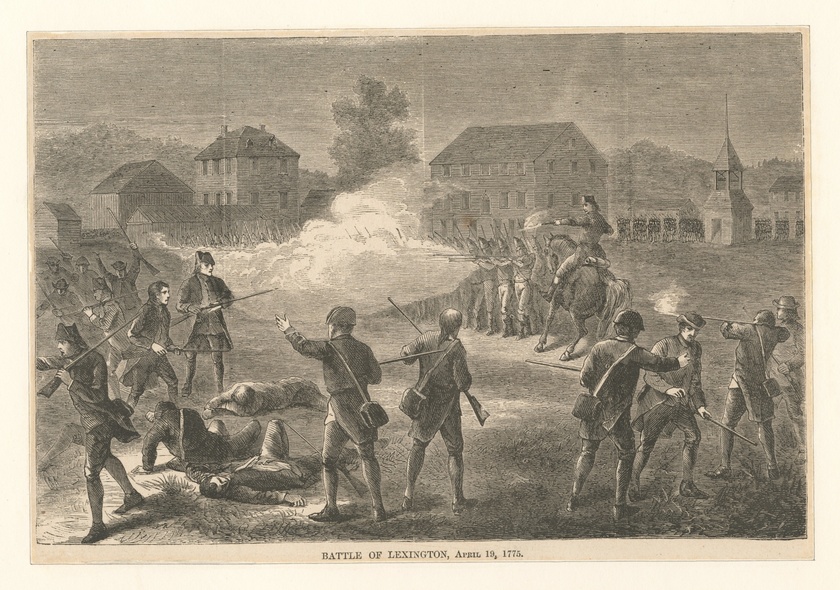
Cardinal Sarah is an extremely well-read and insightful prelate, who has displayed his brilliance in books like The Power of Silence and God or Nothing. He was born in northern Guinea, which as of 2020 has an average IQ of 67.[1] Yet, he is a man who speaks three languages fluently, has degrees in theology and Sacred Scripture, and has distinguished himself by his orthodoxy.
He began seminary training at the age of 12 and has continued to avidly learn since then. It is evident that Catholic education is a powerful tool for developing the mind into an industrious intellect that seeks truth and success. And although many in traditionalist circles find refuge in him, he has maintained Catholic orthodoxy, such as when he said that “whoever is against the pope is, ipso facto, outside the church.”[2]
Cardinal Sarah is not some genetic outlier among the Guinea people. A healthy environment and dedication to success can create many more Sarahs.
The category of a Black race is arbitrary due to the spectrum of genetic variation, and the only objective identifier for race is the singular human race. Nevertheless, for ease of discussion this blog post will refer to those who identify as Black/African, although these terms in regard to IQ studies ultimately become meaningless, as will be shown.
According to hereditarians like Charles Murray, low Black IQ is due to genetics and cannot be significantly improved. This position is completely false. The Eyferth study is proof that the primary cause of IQ discrepancies is the environment:
In the 1950s, German psychologist Klaus Eyferth speculated that Black children raised apart from both the racism and ghetto culture that were then unfortunately prevalent in Black America could be expected to perform intellectually on par with whites. To test this thesis, he administered a German-language version of the standard Wechsler Intelligence Scale for Children (WISC) test to hundreds of children fathered by American servicemen with German mothers. Eighty-three of the children were white, and ninety-eight were mixed-race: the daughters and sons of Black GIs and white German girls. As a culturalist would predict, the children had almost identical SAT scores. The white boys beat the Black/mixed boys by four points—101 to 97—but the mixed-race girls whipped the white girls 96 to 93.
…
Some might object that selection by the U.S. Army of only soldiers within a certain IQ range slanted the results of the test, but we know from the work of Sowell and others that the IQ averages of different racial groups within the U.S. Armed Forces have ranged between 80 and 105, and generally reflect the IQ distributions in our larger society.[3]
This wasn’t the only study to show that race had a negligible effect on IQ:
According to a 2017 Brookings Institution report by Jonathan Rothwell, data from the 2015 National Assessment of Educational Progress (NAEP) show that there is “no [longer] any test score gap between white and multiracial high school students.” In reading and reading analysis, in fact, “multiracial students outperform other groups, including Asians” by a statistically significant margin.
This high performance was not due to any uniquely high level of socioeconomic status enjoyed by biracial teens; the average multiracial high school student comes from a family making $72,000, as opposed to $118,107 for whites and about $60,000 for Blacks. Nor are multiracial children an “exotic” population, resulting mainly from marriages between small high-performing groups like Asians and Jews. Most are just Black and white. According to Rothwell, “[n]early half of multiracial students aged fifteen to eighteen report having Black ancestry, and Black-white combinations are the most frequent interracial origin of multiracial children.”[4]
Reliable adoption studies have shown no significant difference in IQ:
A superior adoption study and one not discussed by the hereditarians was carried out at Arizona State University by the psychologist Elsie Moore, who looked at black and mixed-race children adopted by middle-class families, either black or white, and found no difference in I.Q. between the black and mixed-race children. Most telling is Dr. Moore’s finding that children adopted by white families had I.Q.’s 13 points higher than those of children adopted by black families. The environments that even middle-class black children grow up in are not as favorable for the development of I.Q. as those of middle-class whites.[5]
Further studies into IQ have elucidated other reasons for the apparent gap:
Important recent psychological research helps to pinpoint just what factors shape differences in I.Q. scores. Joseph Fagan of Case Western Reserve University and Cynthia Holland of Cuyahoga Community College tested blacks and whites on their knowledge of, and their ability to learn and reason with, words and concepts. The whites had substantially more knowledge of the various words and concepts, but when participants were tested on their ability to learn new words, either from dictionary definitions or by learning their meaning in context, the blacks did just as well as the whites.
Whites showed better comprehension of sayings, better ability to recognize similarities and better facility with analogies when solutions required knowledge of words and concepts that were more likely to be known to whites than to blacks. But when these kinds of reasoning were tested with words and concepts known equally well to blacks and whites, there were no differences. Within each race, prior knowledge predicted learning and reasoning, but between the races it was prior knowledge only that differed.[6]
Eugenicist Richard Lynn has noted that Scrabble is a cognitively demanding activity:
Scrabble is another cognitively demanding game involving combining letters to make words. It has been shown by Toma, Halpern and Berger (2014) that top scrabble experts have “extraordinarily high levels of visuospatial and verbal working memory capacities” and score 1.23d higher than elite college students who scored at the 93rd percentile of the quantitative SAT. There have been 38 winners of the American National Scrabble Championships 1978-2016 and 16 winners and runners-up of the Canadian National Scrabble Championships 1996- 2013. All of these have been men.[7]
Although the top players in Scrabble have high IQs, it turns out that Nigerians dominate competitive Scrabble, even though many live in poverty. Two of the top ten ranked players are from Nigeria, and 28 are in the top 100.[8]
James Flynn wrote of the closing Black-White IQ gap, noting how for the years 1970-2002, “Blacks gained 4 to 7 IQ points on non-Hispanic Whites between 1972 and 2002.”[9]
Rick Nevin has identified what may be the main cause of the Flynn effect: lead poisoning. It is known that “additive exposure to urban air lead and lead paint in deteriorated housing” has severe effects on the brain. An increase in violent crime is one example, and decreasing IQ is also drastic:
Extensive research shows a dose-response relationship between blood lead and IQ later in life. Preschool blood lead of 10 mcg/dl is associated with 7.4 IQ points lost relative to blood lead of one mcg/dl. Another 1.6 IQ points are lost with blood lead of 15 mcg/dl relative to 10 mcg/dl, and each mcg/dl over 15 lowers IQ by 0.23 points, on average. Therefore, blood lead of 40 mcg/dl is associated with an average loss of 15 IQ points, and a 60 mcg/dl level lowers IQ by almost 20 points.
…
The percent of children ages 1-5 with blood lead over 5 mcg/dl fell from over 31% in 1988-1991 to 2.6% in 2007-2010.
…
In the late-1970s, the average blood lead for black children under age 3 was 50% above the average for white children, but black children were six times more likely to have blood lead of 30–39 mcg/dl and eight times more likely to be over 40 mcg/dl. Those children were juveniles in the early-1990s, when the black juvenile burglary arrest rate was 60% higher than the white rate, but the black juvenile violent crime arrest rate was five times higher, and the black juvenile murder arrest rate was eight times higher than the white juvenile rate. The percent of black preschool children with blood lead above 30 mcg/dl fell by 90% from the late-1970s to the late-1980s, and the black juvenile murder arrest rate then fell 83% from the early-1990s through 2004, and fell to 87% below its early-1990s peak in 2012. The “chaotic families” hypothesis provides no insight into this stunning decline in black juvenile homicide arrests over the past two decades: The percent of black children living in two-parent families was 38% in 1990 and in 2012.[10]
As regulations to remove lead were incorporated in US law, the average IQ of Americans rose. The toxic chemical problem, while still not being completely eradicated from older homes and so low blood-lead levels in children still exist, has largely been solved. There have also been major improvements in developing countries. The United Nations reported in 2011 how a
California State University study cites the massive benefits the phase-out has brought, including more than 1.2 million fewer premature deaths annually, 125,000 of them of children, with tests showing lead in blood levels dropping dramatically by 90 per cent or more, particularly in cities.
Some 58 million crimes have been averted and IQs (intelligence quotient) have risen, with research indicating that children with lots of lead in their blood are much more likely to be aggressive, violent and delinquent. It is estimated that $2.4 trillion in costs have been saved each year, equivalent to 4 per cent of global gross domestic product (GDP).
…
The UN World Health Organization (WHO) estimates that between 15 and 18 million children in developing countries currently suffer from permanent brain damage due to lead poisoning and, according to the results of the research, leaded petrol was responsible for some 90 per cent of human lead exposure.[11]
With improvements in the standard of living, it appears the trend of increasing Black IQ will continue.
[1] https://worldpopulationreview.com/country-rankings/average-iq-by-country
[2] https://www.archbalt.org/cardinal-sarah-to-oppose-the-pope-is-to-be-outside-the-church/
[3] Reilly, Wilfred. Taboo: 10 Facts You Can’t Talk About (p. 68). Regnery Publishing. Kindle Edition.
[4] Reilly, Wilfred. Taboo: 10 Facts You Can’t Talk About (p. 69). Regnery Publishing. Kindle Edition.
[5] https://www.nytimes.com/2007/12/09/opinion/09nisbett.html
[6] https://www.nytimes.com/2007/12/09/opinion/09nisbett.html
[7] https://www.unz.com/article/nigerians-jews-and-scrabble-an-update-on-the-iq-debate/
[8] https://www.unz.com/article/nigerians-jews-and-scrabble-an-update-on-the-iq-debate/
[9] https://journals.sagepub.com/doi/abs/10.1111/j.1467-9280.2006.01802.x
[10] Nevin, Rick. Lucifer Curves: The Legacy of Lead Poisoning. BookBaby. Kindle Edition.














